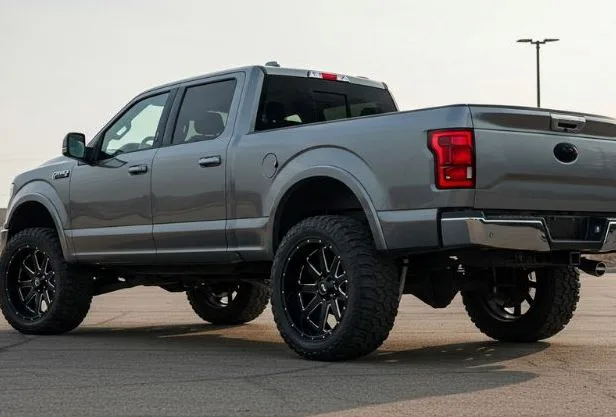How to Choose the Right Foundation Brake Components for Heavy-Duty Vehicles
Heavy-duty vehicles operate under extreme demands, often carrying substantial loads over long distances or navigating stop-start urban environments. In these conditions, braking systems must deliver absolute reliability to ensure safety, compliance, and operational efficiency. At the core of every braking system are the foundation brake components—the structural and mechanical parts that directly influence stopping power, durability, and overall performance.
Choosing the right components is more than a matter of maintenance; it’s a critical decision that affects the safety of drivers, the longevity of vehicles, and the total cost of ownership. Below is a comprehensive guide on how to evaluate and select the most suitable foundation brake components for your fleet or heavy-duty vehicle.
Understanding Foundation Brake Components
Foundation brake components form the backbone of the braking system. These parts include brake shoes, drums or rotors, linings or pads, return springs, slack adjusters, and the actuation hardware that connects to the air or hydraulic system. Their function is to convert braking force into controlled deceleration, dissipating kinetic energy into heat while maintaining vehicle stability.
Because they are exposed to constant friction, high stress, and thermal cycling, selecting the correct specifications is vital. The wrong choice can compromise stopping power, shorten service life, and increase downtime across the fleet.
Key Considerations for Selecting the Right Components
- Vehicle Application and Duty Cycle
Not all braking environments are created equal. A refuse truck that makes frequent stops requires components with high thermal resistance, while long-haul vehicles benefit from materials that balance steady braking with reduced wear over extended distances. Construction vehicles, on the other hand, need durable parts that withstand dirt, debris, and variable terrain. Always align brake specifications with the duty cycle of the vehicle to ensure optimal performance.
- System Compatibility
Every brake system has precise specifications. Drums, shoes, and slack adjusters must align with original equipment manufacturer (OEM) standards to perform as intended. Even minor incompatibility—such as mismatched drum size or incorrect slack adjuster stroke—can lead to uneven wear, reduced braking efficiency, and premature failure. Ensuring compatibility is non-negotiable for maintaining system integrity and safety.
- Material and Friction Properties
Brake linings and pads are available in different material types, each with unique performance characteristics:
- Semi-metallic: Durable with good heat resistance but may increase rotor wear.
- Non-asbestos organic (NAO): Quieter operation with less dust, though not as heat resistant.
- Advanced composite blends: Designed to balance friction, fade resistance, and longevity.
When evaluating materials, consider:
- Coefficient of friction – Determines stopping power and heat generation.
- Fade resistance – The ability to maintain performance at high temperatures.
- Wear rate – Balances component life with drum or rotor preservation.
- Noise and vibration – Influences driver comfort and system diagnostics.
The right material blend ensures consistent braking while reducing downtime and operating costs.
- Compliance with Safety Standards
Foundation brake components must meet recognised safety standards, such as FMVSS 121 or ECE R90. Compliance is not just about ticking regulatory boxes—it ensures the components have been rigorously tested for reliability, performance, and environmental responsibility. Using compliant parts also safeguards fleet operators from liability issues in the event of an accident.
- Serviceability and Maintenance
Ease of service has a direct impact on operating costs. Components that allow for quicker inspection, adjustment, or replacement reduce downtime and labour expenses. Features such as automatic slack adjusters help maintain correct brake stroke with minimal manual intervention, making them highly valuable for large fleets that cannot afford frequent maintenance interruptions.
Mistakes to Avoid
Even with the right intentions, common mistakes in selecting brake components can undermine performance and safety:
- Overlooking heat management – Undersized or low-quality drums and rotors are more likely to overheat, leading to brake fade and dangerous driving conditions.
- Mixing incompatible parts – Combining components from different design standards creates imbalance, resulting in uneven wear and unpredictable braking.
- Prioritising cost over quality – Cheaper parts may reduce upfront expenses, but frequent replacements and higher maintenance costs make them more expensive in the long run.
Best Practices for Fleet Managers
For fleet operators, investing in quality foundation brake components should be seen as a proactive measure. Establishing a parts procurement strategy that focuses on compatibility, compliance, and durability can extend component life and improve vehicle uptime. Regular training for maintenance teams on inspection and installation procedures also ensures that components perform as designed.
Additionally, tracking performance data – such as wear rates, replacement intervals, and downtime events – can help refine purchasing decisions over time. This data-driven approach helps fleets identify the most cost-effective and reliable component choices.
Conclusion
Selecting the right foundation brake components for heavy-duty vehicles is a strategic decision that extends beyond simple repairs. It shapes the safety, efficiency, and overall lifecycle costs of the vehicle. By considering application-specific needs, ensuring system compatibility, selecting appropriate friction materials, and prioritising compliance, operators can make informed choices that deliver long-term benefits.
Ultimately, investing in the correct brake components safeguards both drivers and assets, providing peace of mind that vehicles will perform reliably under the toughest conditions. In the world of heavy-duty transport, where safety and uptime are paramount, getting this decision right is not optional—it’s essential.





